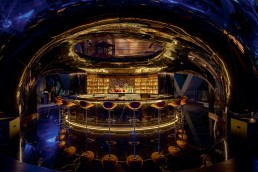
One Za’abeel
arc steps inside the Guinness World Record-breaking One Za’abeel, a glittering new addition to the Dubai skyline, with lighting designed by dpa lighting consultants.
The latest, striking addition to Dubai’s already remarkable skyline, One Za’abeel officially opened to the world in early 2024. Designed by Japanese architectural firm Nikken Sekkei, One Za’abeel consists of two towers – One Za’abeel Tower and One Za’abeel The Residences, standing at 305-metres and 235-metres tall respectively.
The defining feature of this new building though, is the huge, cantilevered arm that connects each tower. Dubbed ‘The Link’, this arm sits 100-metres above ground, and extends 230-metres in length – the cantilevered section of which reaching 67-metres. Following the opening of the building, One Za’abeel was recognised by the Guinness World Records for having the Longest Cantilever Building in the world.
Inside, One Za’abeel The Residences houses 264 luxurious residential units across its 59 storeys, including a breathtaking, five-bedroom penthouse. The taller of the two buildings, the 68-storey One Za’abeel Tower includes nearly 26,000sqm of premium Grade A office space; a SIRO Hotel – the first fully integrated fitness and wellness hotel in Dubai; 94 serviced apartments and nine exclusive penthouses managed by One&Only; and the ultra-luxurious One&Only One Za’abeel, an exceptional resort in the city.
Joining the two structures together, The Link features the world’s longest rooftop infinity pool, offering stunning views of downtown Dubai, as well as six luxurious restaurants – including the Michelin starred La Dame de Pic Dubai and Sagetsu by Tetsuya – the Longevity Hub by Clinique La Prairie, and Sphere, a chic destination bar that sits in the cantilevered part of the structure.
Lighting for the interior of the hotel and The Link was designed by dpa lighting consultants, who tackled the hotel’s eclectic mix of styles and themes – crafted by four world-renowned interior designers – that fuse together in a celebration of opulence. Apart from the building structure, lighting is the only common design discipline bridging all spaces and venues.
Speaking with arc magazine on site earlier this year at One Za’abeel, Nikos Moskofidis, Partner at dpa lighting consultants’ Dubai studio, explains the beginnings on the project: “We were appointed by Mace in 2016, because we had previous experience with them working on large projects and hotels. But the vision behind this project came from Sheikh Mohammed.
“His Highness wanted to do something architectural that would change the landscape of Dubai; it should break records and be the most amazing location in terms of interior design, and should combine F&B in a way that has never been done before in terms of volume and quality.”
Although dpa as a practice has a wealth of experience working in hospitality, Moskofidis explains that the sheer scale of this project was unlike anything that the practice had ever worked on before, and as such affected the way in which the team approached the lighting.
He continues: “We have an extensive portfolio in hospitality; we have done so much over the years that it is bread and butter for us. But this was entirely different.”
The architecture of One Za’abeel is very unique, and although vast, the interiors are at home in Dubai’s busy and modern landscape.
“Each area throughout the building is treated differently and sympathetically to its intended focus. There are areas of calm around the pool spaces and spa, and bright, vibrant spaces in the F&B venues. The rooms and suites are treated calmly with light, only having relatively higher levels where tasks are needed.”
Lighting has therefore played its part in the overall “theatre” of the project, not stepping out of line deliberately for the sake of it, but enhancing and supporting the architectural and interior design intent. Each space has to shout in its own right, but dpa’s challenge was to bring a sense of pragmatism to the planning and execution to match the conceptual thinking. Within this, ambience and texture were of paramount importance to reinforce the luxury of the stay.
But throughout the various areas, lighting acts as a connecting thread, weaving throughout the building and creating a sense of consistency. “When you go from the entrance lobby to a guest room, you see the connection, there is a continuum, a journey,” Moskofidis adds.
“In every space of this project, no matter what its use is or how different it might look, we tried to bring out the interior design feature elements, the rich textures help with the guests’ orientation in the most subtle way and invite the views out to the city’s rich skyline. We used contrast and darkness to create intimate environments in spaces that sit over highways in the heart of one of the busiest and most lively cities in the world.
“While there is an overall approach, the lighting has been tailored to respond to the specific needs of every zone: to evoke a sense of luxury at the entrance and public spaces, to create an intimate environment at a restaurant and bring out the amazing creations of the chefs, to feel welcoming, cosy and pampered in the guestrooms, to make each area feel elevated and yet not pretentious.
“Carefully integrating the lighting within the building fabric so that it doesn’t register to the guests, but feels right, is what I think takes experience, skill, and a lot of work.”
All areas across One Za’abeel were developed during and after concept design with the support of lighting calculations and simulations so that dpa could try and mitigate areas of concern in user comfort, energy usage and physical restrictions for areas that were not mocked up. Although the project didn’t require LEED, the lighting designers deliberately achieved most of the credits for lighting to demonstrate that they were going beyond normal best practice.
Alongside this, strict power density limitations had to be adhered to from the outset, regardless of the exuberance of the space. A sophisticated building-wide BMS system also ensures the lighting is only on at the required levels throughout the 24-hour cycle of the hotel.
Throughout the project, dpa adopted a wide range of techniques to illuminate and bring to life each space. Approaches such as concealment, reflections, backlighting, materiality, ambience, focus, silhouette, and the absence of light work to enhance the visitor experience and create a feeling of classic luxury, regardless of each space’s individual theme.
In the guest suites, simple yet clever approaches in lighting add to the refined feeling – from intuitive, easy-to-understand controls to the use of in-ground uplights to wash the walls, as opposed to downlights in the ceiling.
“We avoided the use of downlights over the spaces where you sit, like the bedroom or the living room, instead focusing those on spaces where you would eat or work, or to illuminate artwork. The living areas instead receive light from bouncing illumination, or from decorative fittings,” Moskofidis explains.
Across the hotel suites, the lighting takes a more subtle, understated approach – something that Moskofidis feels is in keeping with the project’s architect, Nikken Sekkei, and interior designers Denniston, while contrasting with many of Dubai’s other high-end hotels.
Alongside Denniston, dpa also worked with interior designers at Rockwell Group, HBA and LW Design Group, and lighting suppliers, Huda Lighting. But despite collaborating with many different partners, Moskofidis describes the experience as being “very smooth” throughout the project.
“We have long-standing collaborative relationships with most of the interior designers we worked with on this project. We know how they work and what they are looking for, and they appreciate what we bring to the table.
“During the design stages, as lighting consultants, we worked closely with our fellow designers to understand their vision and intent so that we can provide useful input in understanding the limitations and opportunities. Together, we developed ideas that turned into details and then into a design proposal.”
This collaboration, Moskofidis adds, proved essential when any challenges did arise. He continues: “In this project, we had a handful of challenges, as there is a plethora of large-scale decorative features, such as infinity mirrors with colour changing lights at StreetXO, a bubble-like, large scale sculptural bar at Sphere with back-illuminated, colour changing, dynamic triangles, back-illuminated perforated walls and ceilings at Arrazuna, a back-illuminated organic-shaped bar at Aelia. At post contract stages, together with the interior designers, we reviewed mock-ups over and over again, developed the design further or made adjustments where required to make sure that the final outcome was up to our expectations. It is very much an organic process that doesn’t stop till the handover of the project, but we were fortunate to work with some of the best people in the industry.”
As a project, One Za’abeel is one of the biggest hospitality projects in the UAE, and stands as an outstanding achievement of vision, engineering and design.
After working on it for eight years, dpa can reflect on a lighting scheme that, while robust, has all the Instagram shots, but also the much more important and solid story of design, integrity, creativity and longevity.
“Working for eight years on this project, we were probably some of the few people that remained the same from the kick-off until completion,” Moskofidis adds. “Throughout these years, we managed to establish a trusting relationship with the client for staying true to our ethos and carrying the project forward with responsibility and sensitivity.
“I am very proud of the work we did on this project, and the final outcome. It was a jigsaw to piece together – I would often think how it would work with a club and a food court next to each other, and then a Michelin-starred restaurant on the other side, but it works. I go there often with friends as it is a unique destination, and the reactions have been positive, while typically I would look at the ceiling and think about what we could do in a different way.
“We are the harshest critics of our own work, but that’s what helps us improve. It was an unprecedented challenge, but we worked through it with our resilience to deliver outstanding work consistently. Even though the design doesn’t stop at concept stage but keeps evolving, I believe that we managed to carry our initial intent all the way to completion successfully.
“The project has been received very well, with awards for the lighting, interior design, and the destinations, and resulted in more work with the client, and separately with other consultants that we worked with. This is the best feedback that we can get.”



